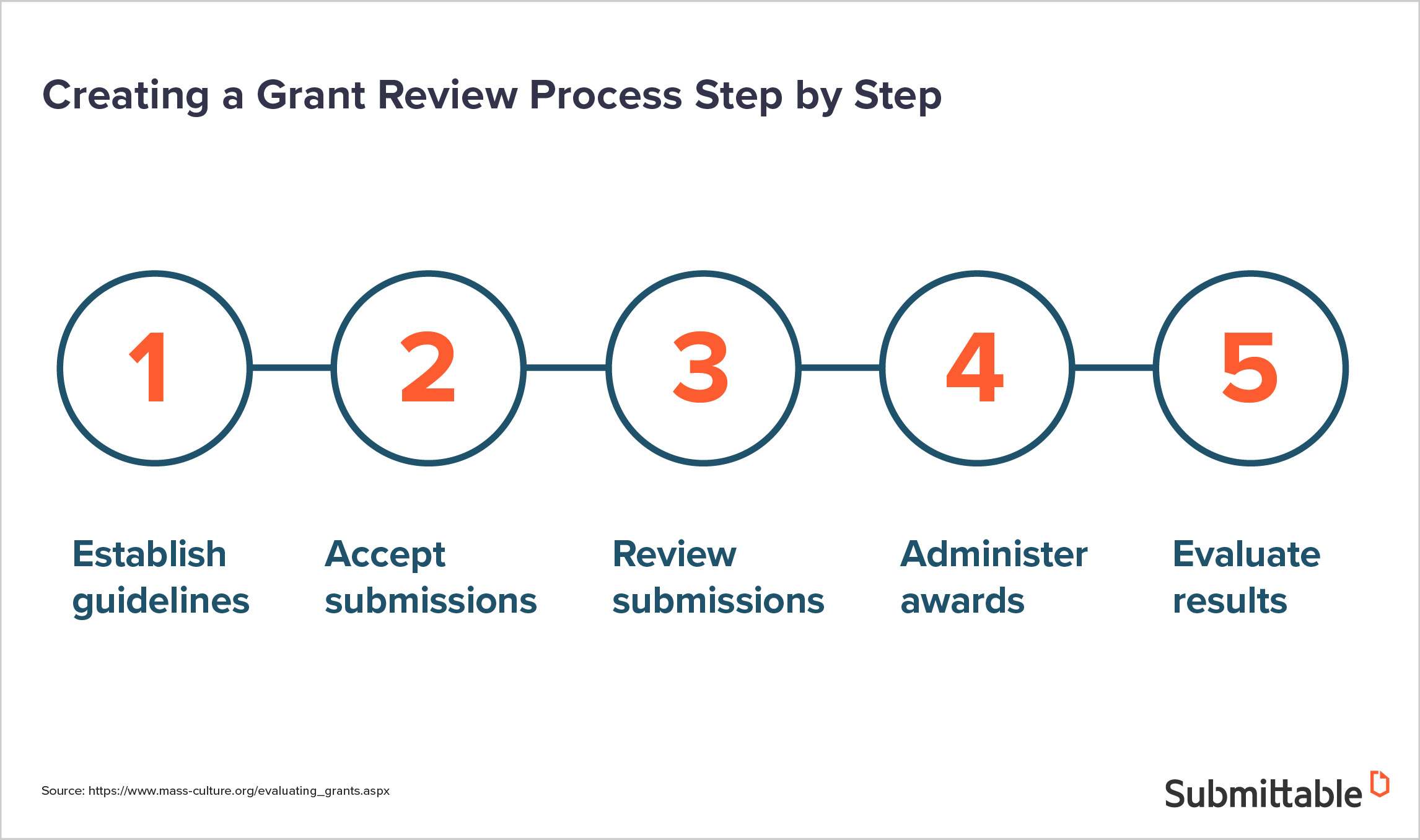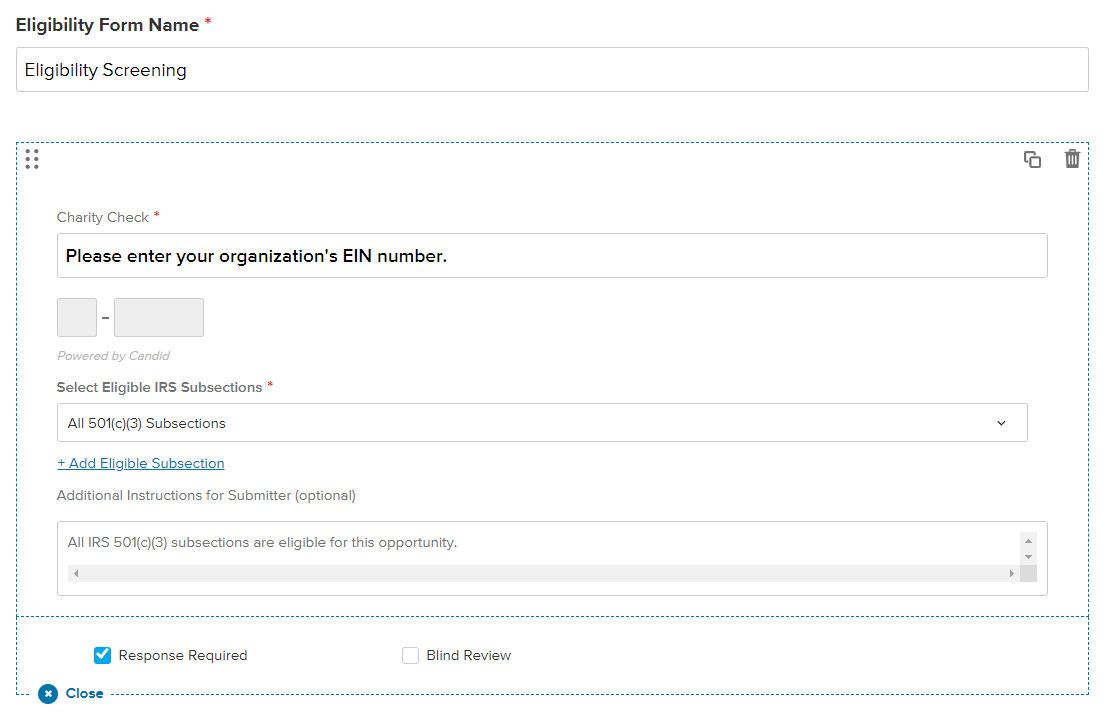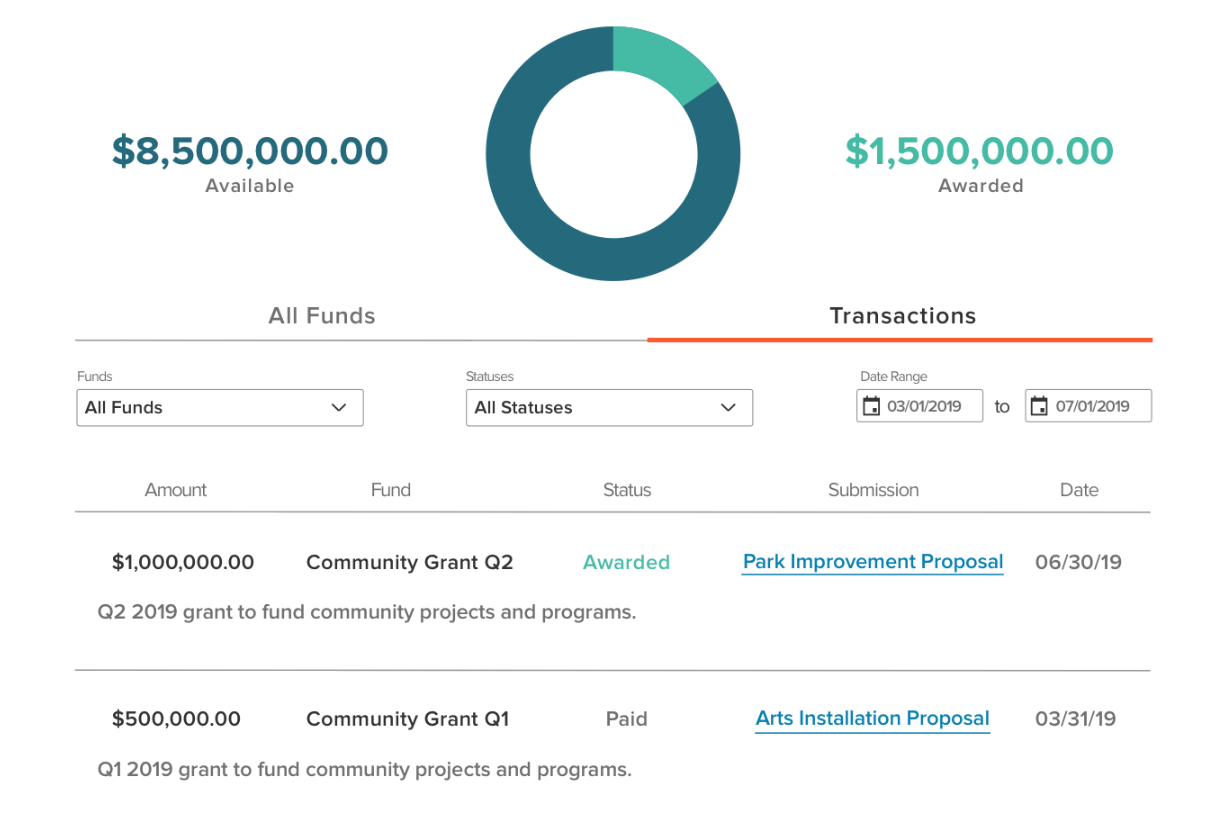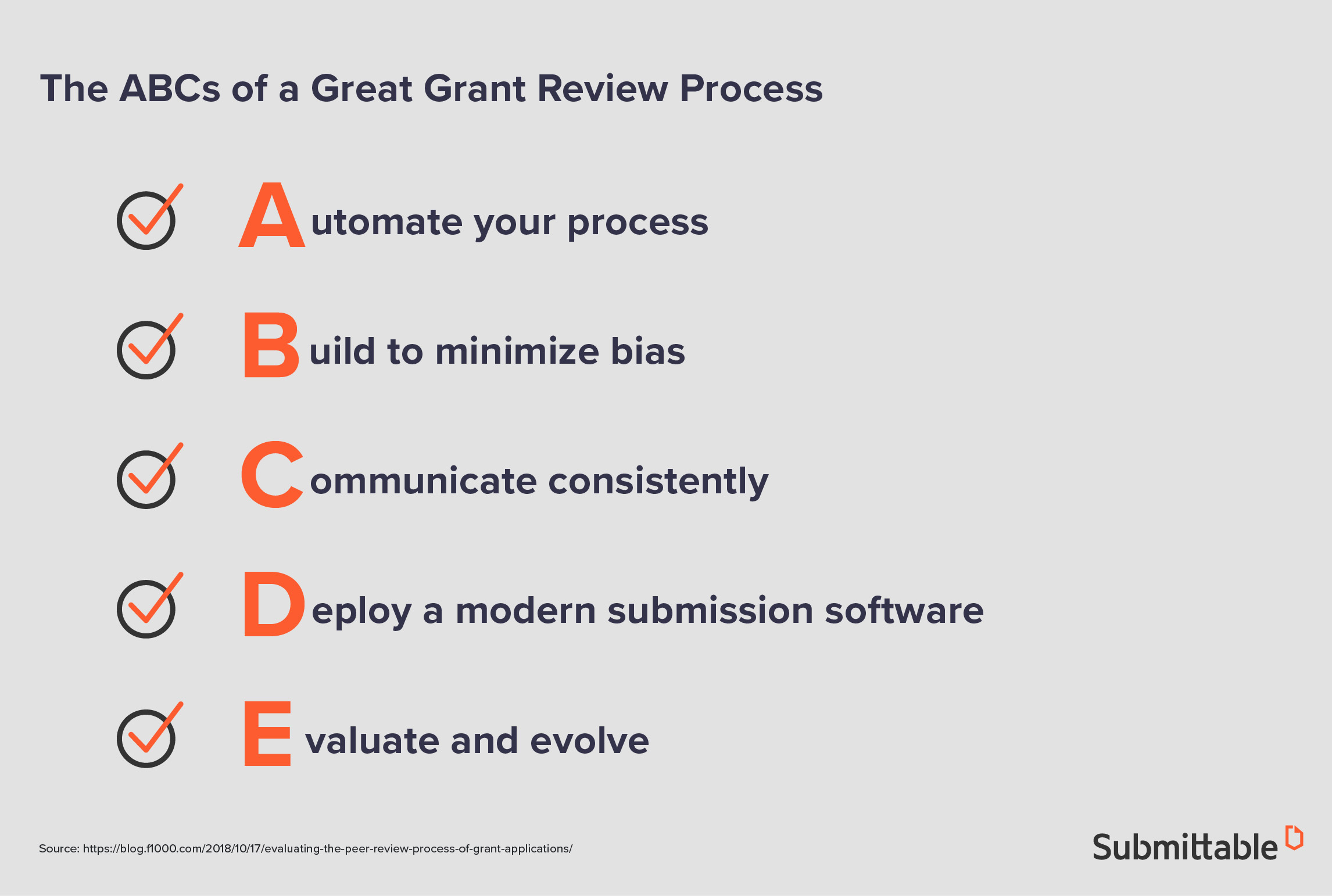It can be a black box for grant seekers. A huge headache for grantmakers.
The good news: It doesn’t have to be this way.
While no grant seekers like to hear their initiative won’t be funded (and no grantmakers enjoy sharing such news), both parties expect the grant review process to be rigorous yet fair.
That’s a lofty goal in principle, and putting it into practice is even more challenging.

Building a solid foundation
Addressing bias in your grant review process starts with knowing the types of bias and how to design specific elements of your review to account for them. Being proactive and creative is the name of the game when it comes to tackling bias.
At the highest level, a solid grant review process delivered through an effective grant management software spells out clear goals for the program, specifies review criteria, and determines which organizations best align with the particular funding opportunity.
Reviewers will vary. Results will as well.
But through our work with thousands of grantmakers and reviewers at Submittable we’ve found a few things remain incredibly consistent.
Whether you’ve got your board, peers, volunteer committees, and/or staff pouring over those applications, a good grant review process keeps the grant seeker experience top of mind. It also ensures that the process as a whole is fair and unbiased, resulting in the best outcomes for the grant and for your organization.
Keep grant-seeking organizations informed throughout the process. Overcommunicate, even. That’s the best way to ensure collegiality and build professionalism in the sector while keeping the process just.
Let’s dive into the nitty-gritty of sprucing up those grant review efforts. We’ll offer some real-life examples from our product and customers along the way.
Designing a grant review process that delivers quality results

When structuring your grant review process, at every step ask yourself: How is this point in the process structured to ease the burden on grantmaking staff while improving the experience for grant seekers?
Each step along the way to funding causes aligned to your organizational mission is an opportunity.
With that noble approach in mind, let’s step through each phase of the grant review process together while discussing how each can be optimized for grantmakers and grant seekers.
Establish guidelines
If you get this part right, you’ll save yourself a ton of time on the back end.
Crystal clear grant guidelines will shape which individuals and organizations apply (i.e. how aligned they are to your grantmaking goals) as well as your eventual decision-making process when it comes to awarding funding.

This step benefits from a little pro-tip called pre-qualification. In short, toss in a few make-or-break questions in the earliest phase of the application to weed out ineligible applicants.
For example, with Submittable’s software for grantmakers, you can use eligibility forms to screen organizations based on their IRS tax exempt status and other eligibility criteria, saving your team from spending valuable time reviewing applications that have little to no chance of being accepted.

Ensuring fairness at this stage of the process means building accessible application forms that take into account the wide variety of applicants who may interact with your application forms.
Accessibility considerations should direct your grant guidelines from the outset.
Accept applications
Once you’ve pre-qualified applicants, you’re ready to bring in applications that fit your funding guidelines.
At this step, you’ll want to layer in questions that help you qualify applicants according to your stated funding criteria. If you do this right, you’ll make it easier for your reviewers to assess the applicants and score them efficiently as they go.
Want to improve your grant application process?
With Submittable’s grant management software, you can review grant proposals more efficiently, with less bias.
Watch our short demo to learn more.
As you’re developing your application process, you’ll want to make sure it meets high standards for accessibility. This means ensuring that people with different abilities can apply with ease. Without this, you run the risk of disqualifying applicants for the wrong reasons.
Consider also accepting nontraditional application materials like video to expand your reach. Gregory Caswell of Alberta Emerald Foundation found Submittable’s ability to accept all types of content—not just text-based applications—to be a huge benefit.
“We’re meant to be recognizing environmental excellence, not the ability to write, so it’s wonderful to be able to provide multiple application options, like video,” Caswell said. “It evens out the playing field.”
A modern grants management tool can be helpful to notify grant seekers about the status of their submission and keep them posted on their progress each step along the way.
Ease and transparency are the names of the game at this step.
Review applications
Grant review is at the heart of any grants process.
This is where you put organizational values into action to determine which organizations will receive funding. Grantmakers structure this part of the process differently depending on the size of their organization and the scope of awards being offered. Whatever the size of your grantmaking program, there are many ways to make this aspect of the review process fair and equitable.
Assigning review in batches or rounds, and establishing multiple deadlines and check-in points along the way, can keep your process moving while also ensuring a more fair assessment for every applicant.

Generally, staff review occurs in the earlier phases as the employees of grantmaking organizations toss out incomplete applications, pre-qualify organizations, and accept complete applications aligned to the funding criteria.
Panel review involves a full review of all applications submitted for funding. This panel can consist of volunteers, staff, outside experts, and really anyone the grantmaker selects to determine how funding is allocated. Remember that a diverse panel is better here as it will result in fairer and more equitable funding decisions.
For larger grantmaking organizations, a national chair review step may be necessary. Especially with national grantmakers that have individual regions across the country, this step can make sense to synthesize the decisions made by review panels at more local levels. Some grantmakers prefer to give final say over funding to a national board or chairperson due to organizational bylaws or tradition.
For all phases of the review process, employing an anonymous submission and/or anonymous judging structure goes a long way towards ensuring fairness. This means masking the submitters and reviewers from each other so the focus remains on the quality of the applications rather than any potential bias that come from knowing the identities of either party.
Remember that this three-step aspect of the grant review process isn’t necessarily right for every organization. Smaller grantmaking organizations may want a shorter, more streamlined process that better suits their unique needs.
Administer awards
Now for the fun part.
There’s nothing more gratifying for grantmakers than supporting mission-driven organizations in their community. That’s why you’re in the business of philanthropy in the first place.

Whether you hold a big gala, make a huge splash in the press, or quietly disburse funds to selected organizations, flexible processes and consistent communication are key here.
Make sure that you’re clear with organizations about the disbursement schedule. There’s nothing worse for nonprofits than not knowing when the next check is coming in. Such funds often mean the difference between being able to afford key resources versus going without.
If you’re dealing with larger awards and/or multi-year grants, allow organizations to adjust their disbursement schedule according to their unique organizational needs (so long as this works within your budget, of course).
Keep in mind that realities on the ground are constantly shifting for organizations doing social impact work, so help them out with a little flexibility from the funder side of things. Consider making the funding part of the grantmaking process more of a conversation than simply one about cutting checks.
Evaluate results
If awarding funding is a conversation, this part of the process is the workshop.
After funding has been awarded, grantmakers and organizations dig into the results of the work to understand their impact. Rather than one big data dump at the end of a grant engagement, Submittable customers encourage organizations to share interim progress reports throughout the grant cycle with surveys or additional forms to help refine the grantmaking process.
Skilled grantmakers use this mid-course data to support organizations in their execution of grant objectives while sometimes even offering additional resources (beyond the initial funding) to help with execution. To the extent that it’s helpful, dig into the nitty-gritty with organizations and be supportive with connections and other non-monetary resources where possible.
And it’s valuable to use reporting tools to assess your own process, too. Grantmakers use Submittable’s Advanced Reporting tools to identify trends, learn lessons for next time, and compare year over year results, right within the platform, with pivot tables, conditional formatting, and the easy creation of charts and graphs.

After the grant is finished, share the data publicly so that other grantmakers and social impact organizations can learn from the findings and improve their work too. That’s how you turn your grantmaking into a multiplier rather than just a one-off project.
How grantmakers are improving the grant review process

Once you’ve built a streamlined grant review process, it’s time to optimize for fairness.
Every step in your grant review process should have some sort of built-in “equity filter.” In other words, ensure that you’re provided equitable access to all applicants at each juncture with clear intentions and well-developed review structures.
Take a look at what top grantmakers are doing to refine their grant review processes. Borrow and steal the aspects that make sense for your grantmaking. Starting with a modern grant management software sets the foundation for many of the refinements you can make to your grant review process.
Whether it’s notifying applicants of the next steps or moving work along a queue, the automation (and therefore productivity) benefits of a powerful submission management tool are significant. The great thing about automation is that it can ensure all stakeholders are kept well-informed and engaged through the grant review process by mitigating human error than could keep certain individuals out of the loop.
Treat the grant review process as any other professional endeavor and communicate with organizations and your review team consistently. They’re your peers in the work and deserve to be treated as such so their slice of the work can move forward.
Lastly, put all of that great data you glean from the grantmaking process to work, for you and for the sector. Let the insights you gather from each grant inform future grantmaking while also enriching the grantmaking space with your learnings from specific projects. Being transparent about this data is another way to drive equity across the grantmaking sector as other practitioners can borrow best practices and improve their processes for awarding grants.
Think of the grant review process as a comprehensive and holistic continuum of work that grantmakers take on in order to support local organizations. It’s so much more than just reviewing applications and cutting checks. The right grant review process can amplify who gets funded, how, and improve the quality of work being done in communities.
Done right, grant review is about driving impact in communities ready for those additional resources.
Interested in improving your grants process? Our team is here to help. Reach out to talk one of our grants experts; we’d love to learn more about your work and set up a custom demo for you.
